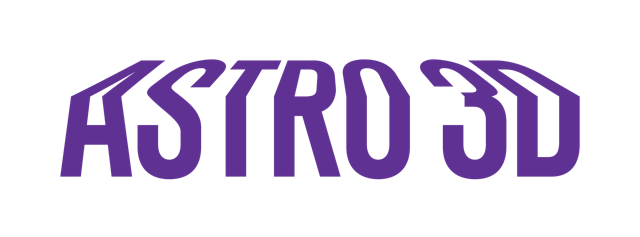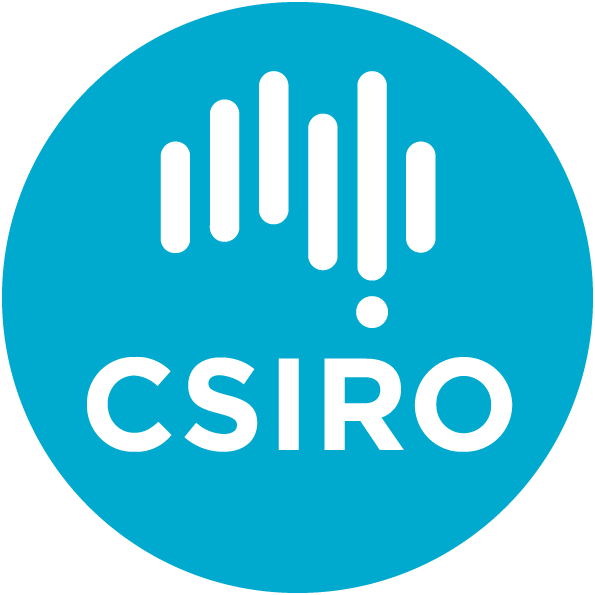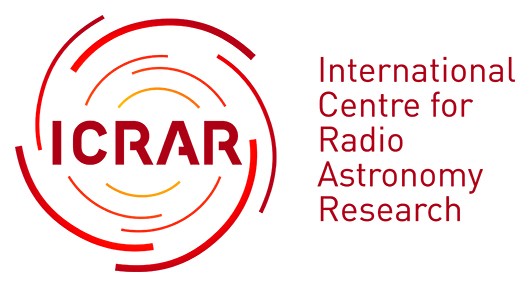February 2023
Editor: Manasvee Saraf
Foreword
MANASVEE SARAF
Welcome to the February 2023 edition of the WALLABY newsletter! I have taken over as the editor of the WALLABY newsletter from the adept hands of Tristan Reynolds and would like to begin this edition by thanking him for his contributions to the past 5 editions of the newsletter. The past six months have been very thrilling for the WALLABY team with the beginning of the full survey trial and the public release of the data from the phase 1 of the ASKAP pilot observations!
In this issue, we have updates from Karen Lee-Waddell and Lister Staveley-Smith on the WALLABY full survey sky coverage and from Tobias Westmeier on the first WALLABY public data release. We welcome 4 new WALLABY members (who have joined since August 2022) and the newly appointed co-PI – Barbara Catinella – and Deputy Project Manager – Bi-Qing For. Congratulations to all! We also have a science update from Joe Grundy on his paper submitted for publication and multiple and significant technical updates from Technical Working Groups (TWG) 3, 4, 5 and 7. Happy reading!
Message from the PIs
LISTER STAVELEY-SMITH & BARBARA CATINELLA
This is a very exciting time for WALLABY, with several important milestones achieved (as reported elsewhere in this newsletter) and the start of full survey observations. We hope that you are as eager as us to dive deep into the fantastic science that lies ahead! As mentioned in the Foreword, the executive team has slightly grown to better deal with the ramping up of activities expected in connection with the start of full survey operations. Thus, Barbara Catinella and Bi-Qing For have been appointed WALLABY co-PI and Deputy Project Manager, respectively, following an expression of interest process that took place in late 2022. Barbara has been involved with WALLABY for several years, and is thrilled to work with Lister and the whole team in her new role to help maximizing the scientific impact and legacy of the survey.
As the WALLABY team continues growing, we bid farewell to Tristan Reynolds, who reached the end of his ASTRO 3D post-doctoral appointment at ICRAR/UWA and decided to pursue a career outside astronomy. Tristan has been an exceptionally productive team member who has helped WALLABY in many ways, by leading TWGs, organizing meetings, being in charge of the newsletter and much more, but above all has been an absolute pleasure to have around. We wish him all the very best for his future, and thank Manasvee for taking over as editor of the newsletter.
We are also delighted to note the release of the official WALLABY painting (see Fig. 1) which is available for WALLABY members to use in their WALLABY-related scientific presentations. Please acknowledge the artist, Zeke George. For reasons of cultural sensitivity, if you wish to use the image for other purposes, please contact a member of the WALLABY management team, or Rachel Rayner at CSIRO comms, for permission.
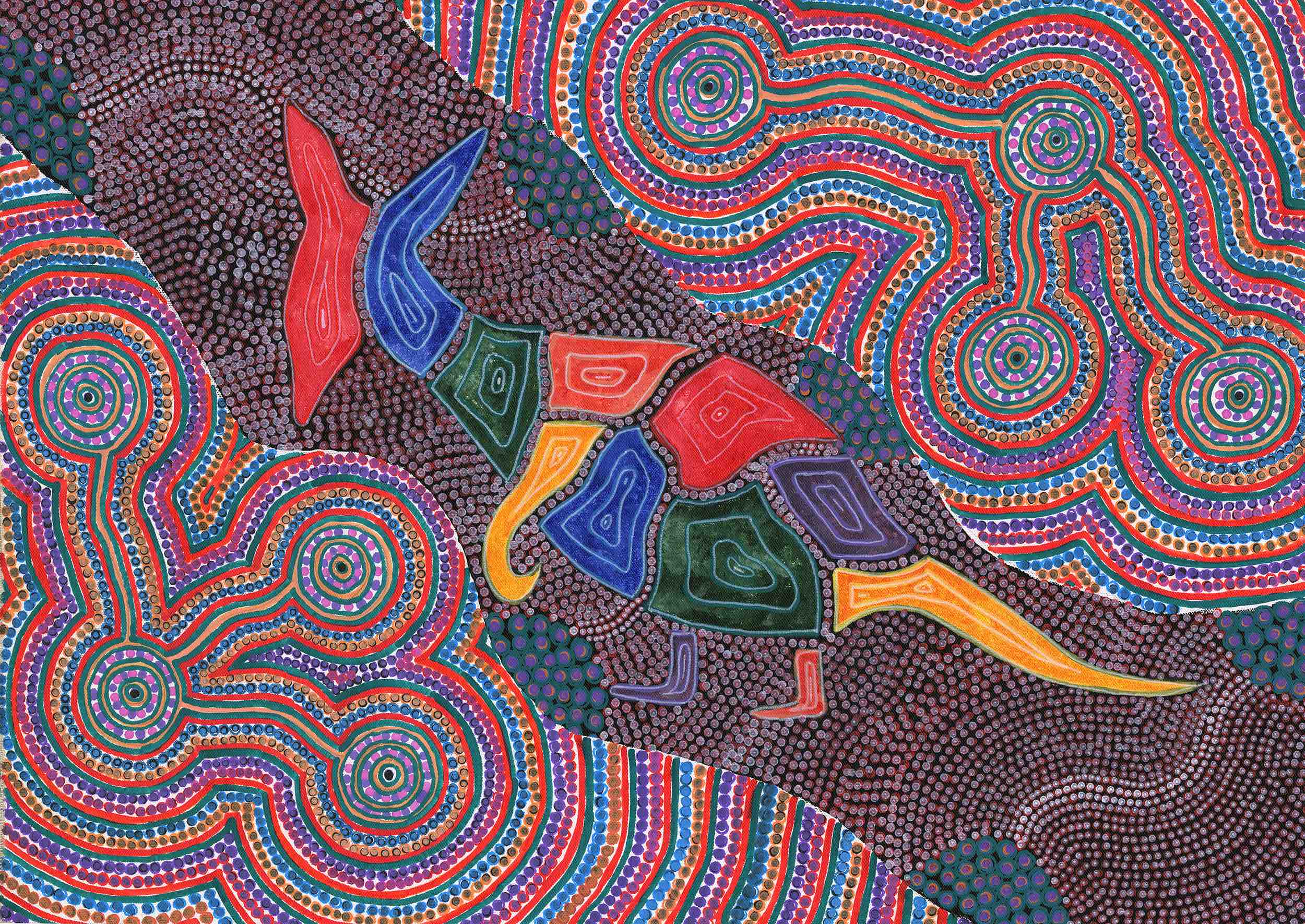
“Hi, my name is Zeke George. I’m a Wajarri and Badimaya Yamaji. My painting is of the WALLABY survey, which studies how galaxies move and seeks to understand how they work by watching them spin and collide. My painting shows the galaxies spinning and colliding in space together in the shape of a wallaby.”
Zeke George
Lastly, there are a number of very interesting conferences and meetings coming up this year, as you can see at the bottom of the newsletter, and we encourage all team members working on WALLABY papers to present their findings in these forums (feel free to get in touch if you need any introductory material for your slides).
Message from the Project Manager
TOBIAS WESTMEIER & BI-QING FOR
The second half of 2022 has been a productive and successful one for the WALLABY project. Our first Busy Week in two years was held in Perth during the week of 22–26 August. The aim of the Busy Week was to ensure that our survey strategy, data reduction and postprocessing pipelines were ready for the start of full survey observations. Daily plenary sessions covered a range of topics, including continuum removal, flagging, data archiving, quality control, source finding and kinematic modelling of galaxies. Additional break-out sessions then allowed participants to address specific problems. With 10–15 participants (Fig. 2), plus several more team members from around the world joining individual sessions via video links, the Busy Week was a great success and has led to critical improvements to WALLABY’s processing and data analysis pipelines just in time for the start of full survey observations.

Another highlight was the conclusion of the WALLABY pilot survey. Source catalogues and kinematic models from phase 1 of the pilot survey were released to the general public on 15 November 2022. Source catalogues and data products for the last remaining fields from phase 2 of the pilot survey – in the direction of Vela and the NGC 5044 group – were internally released to the WALLABY team just before the end of the year. For more information on the pilot survey please see the TWG 4 update and data release report in this issue.
Lastly, an official four-week trial of full ASKAP survey observations was launched on 16 November 2022 and resulted in ten WALLABY survey footprints being observed. Two of these have already been processed, while processing of the remaining data is currently delayed as we await the full deployment of the new Setonix supercomputer at the Pawsey Centre. Full survey observations are expected to ramp up again in a few months’ time once Setonix is fully operational.
Message from the Project Scientist
KAREN LEE-WADDELL
Full surveys have begun (for WALLABY and a few other ASKAP Survey Science Teams (SSTs))!
The “ASKAP full survey trial” took place in November 2022 to test the (automated) end-to-end functionality of ASKAP. During the trial period, 10 WALLABY footprints were successfully observed (checkout this section of the newsletter for more details about our tiling strategy). The data is now being processed – under the watchful direction of the new processing manager software – albeit, in a slower than anticipated manner as the Pawsey Supercomputing Centre diligently works on getting Setonix fully operational.
Initial science outputs and results are still finding a few bugs and required parameter adjustments, but overall, there is a positive outlook that ASKAP full surveys can officially begin in the next few months (pending the progress on the Setonix upgrade). In the meantime, we are working on validating and releasing the first footprints of WALLABY full survey data.
New Member Profiles
Chuan-Peng Zhang

I am Chuan-Peng Zhang, and I am an associate professor at the National Astronomical Observatories, Chinese Academy of Sciences (NAOC). Previously, I was a postdoc at the Max-Planck-Institut für Astronomie (MPIA). My work is focused on the extragalactic HI Five hundred meter Aperture Spherical Telescope (HIFAST) survey, which is similar to the WALLABY project. My current scientific work is the HIFAST and WALLABY data reduction, data statistics and source extraction. More than 40000 extragalactic HI galaxies have been extracted from around 7500 square degrees of HIFAST data. Later, I will work on the HI mass function (HIMF) and OH megamasers. My other interests are in the early high-mass star formation in giant molecular clouds, infrared dust bubbles, infrared dark clouds and hyper-compact HII regions and the fragmentation and deuteration of high-mass star formation in the Milky Way.
Jingyao Zhu
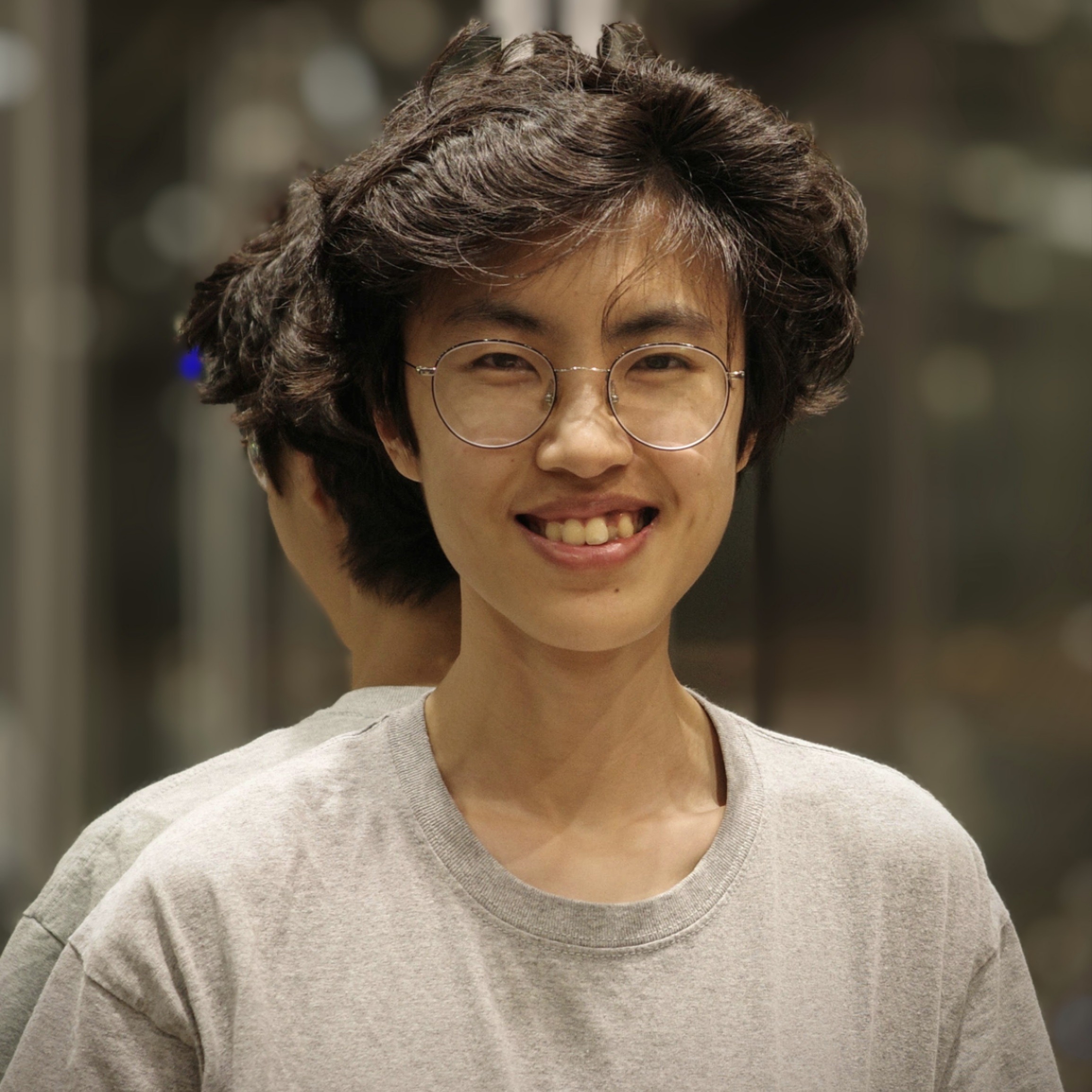
Hi! My name is Jingyao, and I am currently an Astronomy PhD student at Columbia University. My research interests are in the gas content in galaxies, particularly the interactions between satellite and host galaxies, and the potential impact on the satellite’s gas and star formation. To do so, I use 21-cm HI observations to characterize the gas content in dwarf galaxy satellites and high-resolution hydrodynamical simulations to model the interactions.
I am very excited to join the WALLABY team. As part of my PhD thesis, I look forward to working with WALLABY collaborators, probing for the low HI mass objects in the local universe, and building a larger sample of gaseous dwarf satellites around spirals.
Mathieu Perron-Cormier
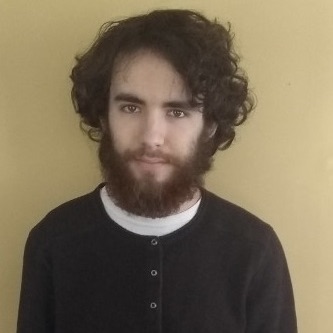
I am Mathieu Perron-Cormier, an astrophysics graduate student at Queen’s University, Kingston. I completed my Bachelor at the Université de Moncton, where I worked on the chemical abundance analysis of stars. I have since pivoted to galaxies and am conducting my masters under Professor Kristine Spekkens’ supervision. My research focuses on defining HI survey selection functions as well as measuring galaxy asymmetries. My interest in WALLABY lies in creating comparable samples of galaxies between the survey and cosmological simulations.
Sanchayeeta Borthakur
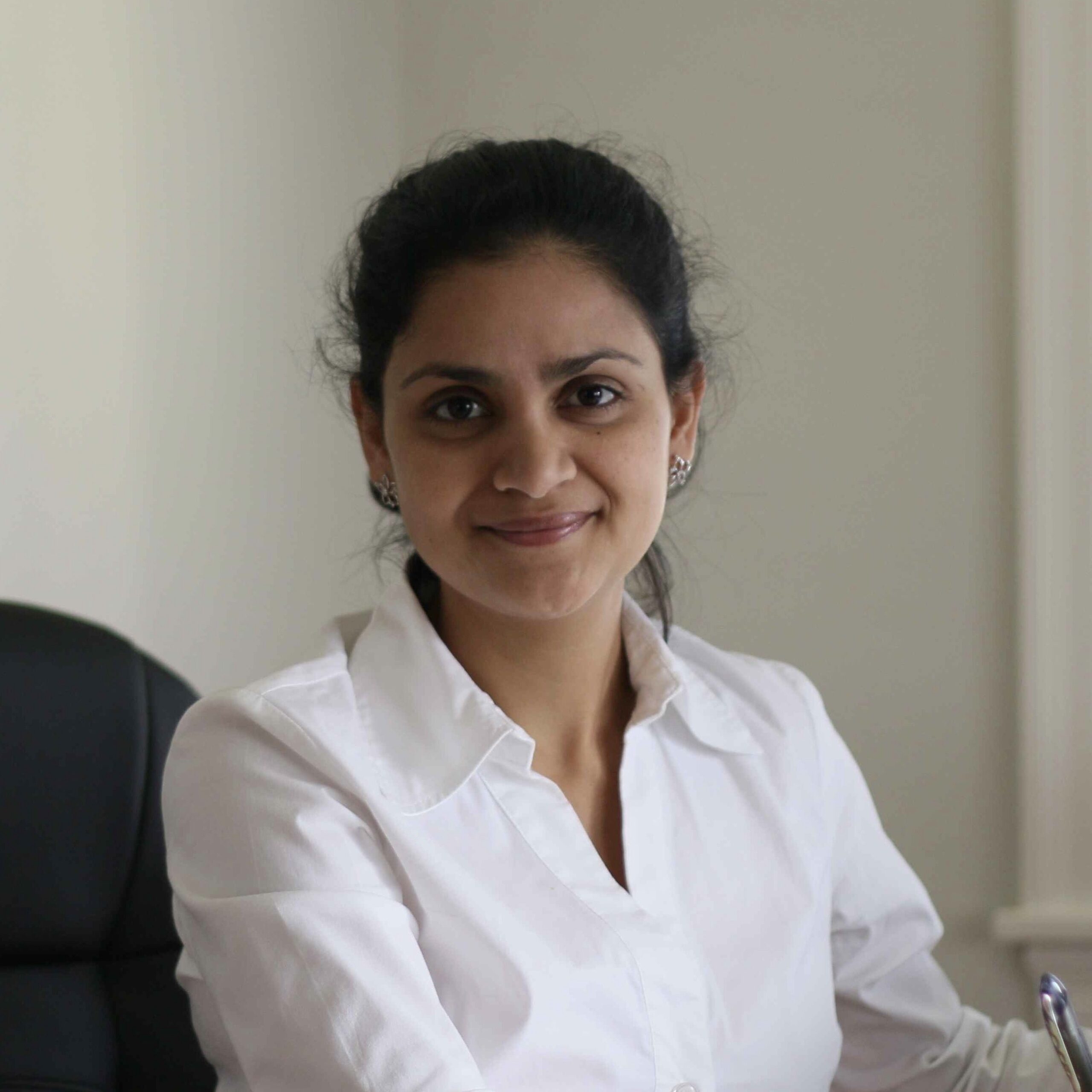
I am an Assistant Professor at the Arizona State University, School of Earth and Space Exploration. I study how galaxies are connected via the exchange of matter and energy in our ever-expanding universe. I use the Hubble Space Telescope and ground-based radio and optical observatories to probe the vast reservoir of hidden matter in the circumgalactic medium and its connection to the interstellar medium of galaxies.
I am excited to join the WALLABY team and look forward to using WALLABY data to explore how galaxies sustain their gas disks despite continuously losing gas to star formation. I hope to conduct synergistic studies combining WALLABY HI maps with quasi-stellar objects (QSO) absorption spectroscopy and deep optical imaging to trace gas flows into and out of HI disks of galaxies.
WALLABY Full Survey Sky Coverage
by Karen Lee-Waddell & Lister Staveley-Smith
We have finalised the WALLABY sky coverage area for the first 5 years of ASKAP full survey observations!
After a consultation process with the WALLABY Science Working Groups, coverage for the WALLABY full survey – as shown in Fig. 3 – will comprise a core region in the range of -60° ≲ declination ≲ -15° (with a few tiles missing from the southernmost row) and individual regions near the celestial equator that correspond to interesting science fields (i.e. the Hyper Suprime-Cam Subaru Strategic Program fields, Virgo cluster, and Galaxy And Mass Assembly (GAMA) G02). Coordinates and other details about the tiles can be found on the AS202 spreadsheet.
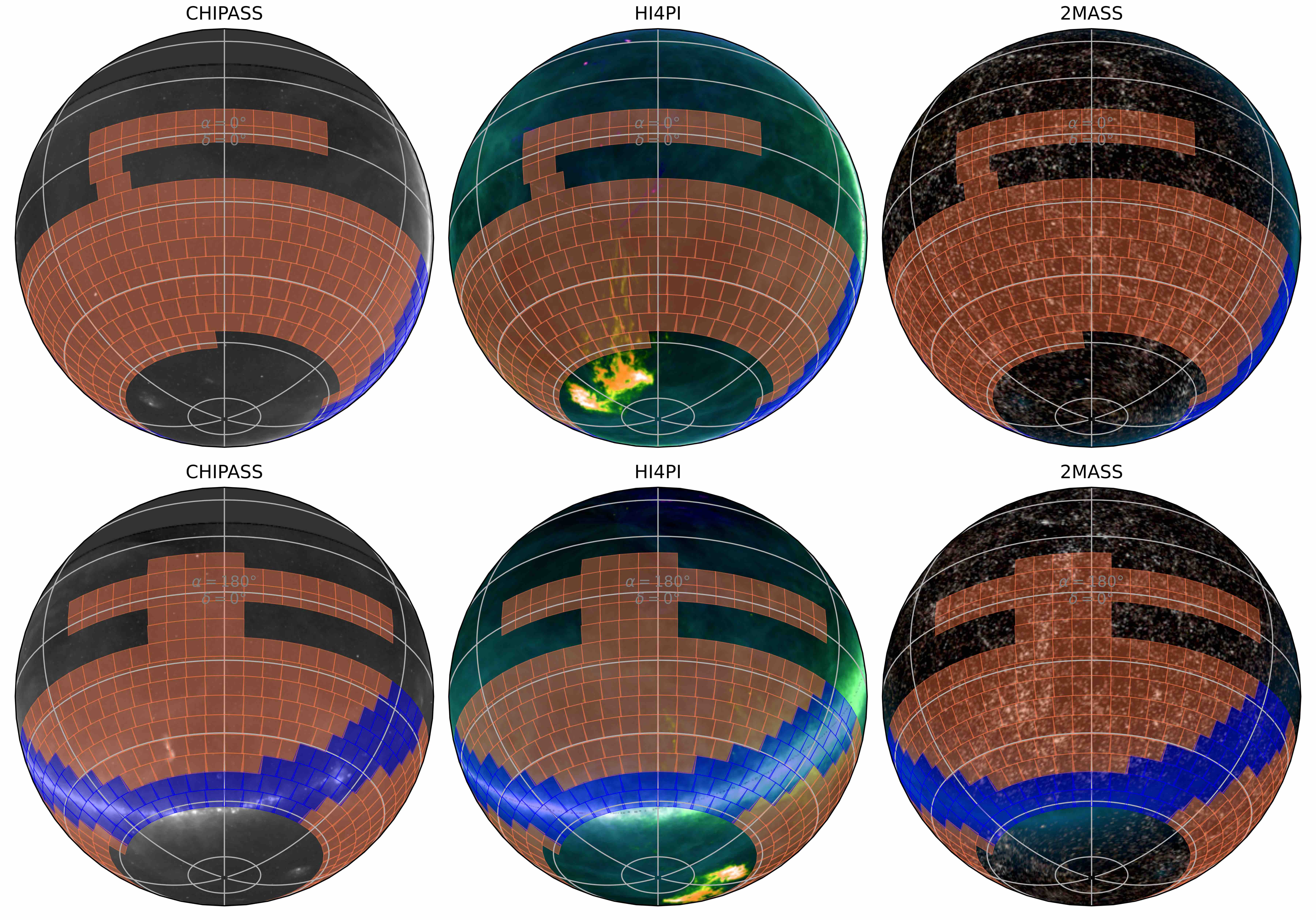
During the initial year of full surveys, WALLABY will avoid regions that contain bright continuum sources (indicated by the red markers in Fig. 4). As the ASKAPsoft processing pipeline improves to enable better continuum subtraction, this limitation will be removed.
First WALLABY Public Data Release
by Tobias Westmeier
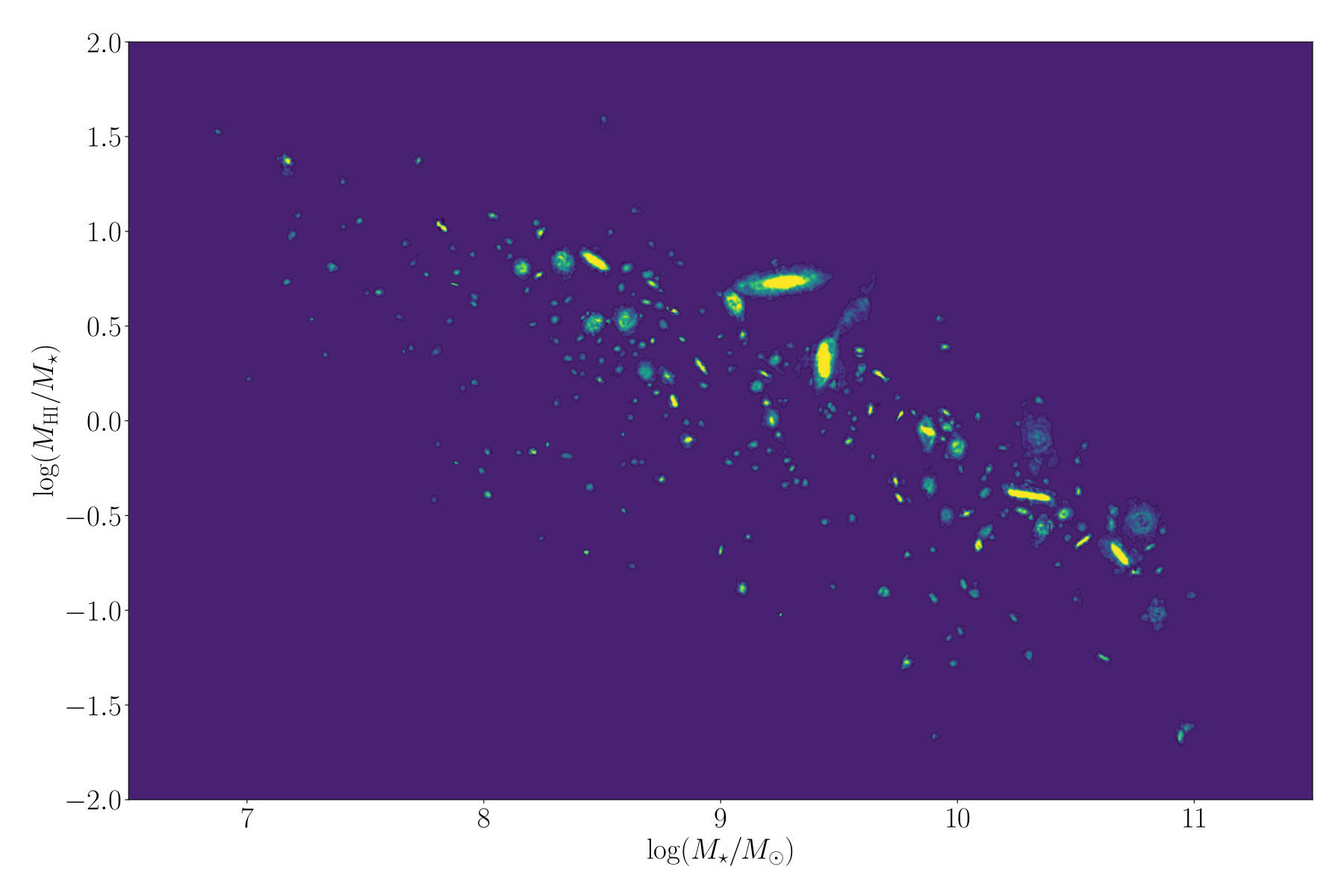
The first batch of value-added data from the WALLABY pilot survey was released to the general public on 15 November 2022, which marks an important milestone for the survey. The data release includes source catalogues, spectra and images for almost 600 galaxies detected during phase 1 of the pilot survey in addition to kinematic models and rotation curves for more than 100 spatially resolved galaxies in three 60-deg2 fields in the direction of the Hydra and Norma galaxy clusters and the NGC 4636 galaxy group.
Fig. 5 displays the total HI intensity maps of these galaxies on a grid of gas fraction as a function of stellar mass. All data products have been made available through the CSIRO ASKAP Science Data Archive (CASDA) and the Canadian Astronomy Data Centre (CADC). In addition to searching for data via their online interfaces, both archives also offer a table access protocol (TAP) service which allows data to be retrieved directly in Python or through virtual observatory (VO) compliant software such as Topcat. More information about the different data access options is available on the WALLABY website.
Given the commissioning nature of the pilot survey, potential users of the data need to be aware that there are still a few issues and artefacts affecting the data quality. This includes residual continuum emission, missing beams, correlator drop-outs and flux errors caused by sub-optimal deconvolution and inaccurate primary beam models, to name just a few. Many of these issues have since been rectified, and future releases are expected to have much better data quality.
The data release was accompanied by two papers describing the source finding and resulting data products (Westmeier et al., 2022, PASA, 39, e058) as well as the kinematic modelling of spatially resolved galaxies (Deg et al., 2022, PASA, 39, e059), both of which were published in Publications of the Astronomical Society of Australia (PASA) on the day of the data release. In addition, we marked the first public data release from WALLABY with an official media release.
Further data releases from WALLABY will occur regularly over the coming years following the start of full ASKAP observation trials in November 2022. The next release is planned for later this year and will include approximately 1800 galaxies detected during phase 2 of the pilot survey.
WALLABY Pre-Pilot Survey: Radio Continuum Properties of the Eridanus Supergroup
by Joe Grundy
The WALLABY pre-pilot survey observed the Eridanus supergroup and we performed the first in-depth radio continuum science using WALLABY early science data. We looked to examine the relationships between neutral hydrogen (HI) and continuum observations on a population of galaxies known to be undergoing environmental pre-processing.
Radio continuum emission is produced in star-forming galaxies (SFGs) by massive young stars as they ionise their surrounding HI gas envelopes and then explode as supernova, producing shocks that emit synchrotron radiation. These massive young stars also heat the surrounding dust and molecular clouds which re-radiate in the infrared (IR). Hence both the radio continuum emission and the IR emission are linked to star formation resulting in the widely corroborated infrared-radio correlation (IRRC). Understanding how the radio continuum and IRRC are related to the physical properties of SFGs will be key to understanding future survey data that will be produced by the SKA and its pathfinders.
We examined the star-formation properties of the galaxies using a number of different methods and found that they are primarily passive disks that are not significantly star-bursting. We then created resolved IRRC maps for each galaxy to investigate whether we can observe the group environment pre-processing effects that are visible in the WALLABY HI observations. While the low SFR of our sample limited our ability to observe the radio continuum throughout the galactic disks of our sample, we found that the resolved IRRC can be used to easily discriminate between active galactic nuclei (AGN) and SFGs as well as identify background radio sources.
We find evidence for environmental pre-processing in NGC 1385 due to the coincidence between the IRRC gradient and HI disturbance (see Fig. 6). The gradient in the IRRC is postulated to be caused by cosmic ray (CR) electron streaming due to tidal reacceleration or ram-pressure. Resolved studies like this will be important for future surveys as understanding how the radio continuum and IRRC within galaxies can be modified by environmental effects will allow us to explain what causes discrepancies in these properties when measured as part of large-scale population analyses. If you want to read more, please check out my (soon to be accepted) paper in PASA or on the ArXiv and the associated data products (DOI: https://doi.org/10.25919/8ga8-0n09).
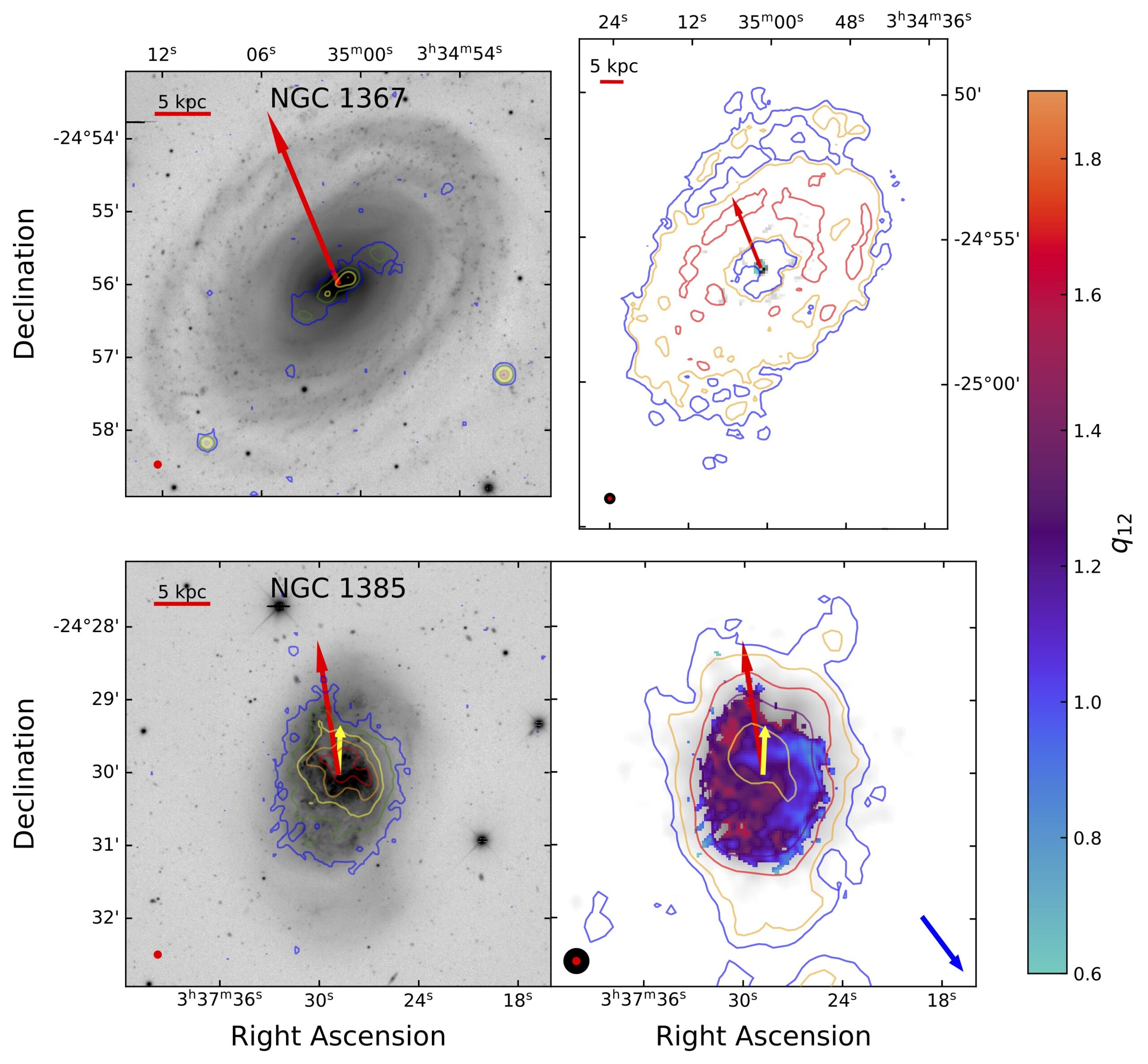
TWG 3 – Data Processing, Imaging & Quality Control
by Bi-Qing For
We have updated the WALLABY hyper-text markup language (HTML) validation report with expected RMS noise level based on the System Equivalent Flux Density (SEFD) of 36 beams (XX and YY polarisations) for all antennas. A colour coded plot for visualising the ratio of root mean square (RMS) noise (actual/expected) of 36 beams and a summary plot of SEFD have been added to the report. These changes will be implemented in due course by the ASKAP operation team. All WALLABY data will also run through Deep Investigation of Neutral Gas Origins (DINGO) and First Large Absorption Survey in HI (FLASH) validation scripts. These validation reports will be served as a guideline for those who wish to use WALLABY data for DINGO/FLASH related science.
TWG 4 – Source Finding & Cataloguing
by Tobias Westmeier on behalf of TWG 4
During the second half of 2022, TWG 4 has been running the Source Finding Application 2 (SoFiA 2) on the remaining data from phase 2 of the WALLABY pilot survey. This was successfully completed in December, with the NGC 5044 and Vela source catalogues internally released to the team just before Christmas. Hence, the WALLABY pilot survey is now complete.
Phase 2 of the pilot survey has been a great success, with close to 1800 H I detections overall, which is three times the detection rate of phase 1 over the same number of ASKAP pointings. This substantial improvement is the result of several changes, including a more careful field placement to avoid bright continuum emission that had corrupted some of the phase 1 data. In addition, we also managed to improve the source finding by utilising more optimal settings in SoFiA 2 and making use of additional filters (including continuum subtraction and bandpass ripple reduction) to reduce the level of artefacts in the data prior to source finding. Fig. 7 shows a plot of H I mass versus redshift for phase 1 and 2 detections, illustrating the significant improvement in depth and source count.

The members of TWG 4 have also been working on maintaining and improving both SoFiA 2 and the SoFiA Image Pipeline (SIP) over the past few months. Both software packages are available on GitHub at https://github.com/SoFiA-Admin/SoFiA-2/ and https://github.com/kmhess/SoFiA-image-pipeline, respectively.
Lastly, with help from the Australian SKA Regional Centre (AusSRC) and Austin Shen in particular, we have been able to finalise the source finding workflow for the full WALLABY survey. The new workflow enables us to run SoFiA 2 on freshly observed survey tiles and combine all of the source finding output from different parts of the sky into a single, coherent WALLABY source database with associated images and spectra for each detection. The AusSRC has developed a web-based user interface that allows us to visually inspect new source finding runs, remove false positives, deal with duplicate detections and finally incorporate the genuine H I sources into the source database where they are available to the WALLABY team for scientific analysis. All of the newly developed software is available from the AusSRC GitHub repository at https://github.com/AusSRC. We successfully tested and debugged the new workflow on the four-tile NGC 5044 mosaic from phase 2 of the pilot survey and are ready to run SoFiA 2 on the full WALLABY survey at this point.
TWG 5 – Kinematics Pipeline
by Kristine Spekkens
TWG 5 continues to work on kinematically modelling spatially-resolved WALLABY detections. A major milestone was achieved in November 2022 with the publication of automatically and homogeneously-generated kinematic models for over 100 Public Data Release 1 (PDR 1) detections (Deg et al., 2022, PASA, 39, e059), which are available to the public through the CASDA and the CADC. The vast majority of Pilot Survey Phase 2 detections have now also been modelled using the same workflow as for PDR 1, with models internally released to WALLABY team members through AusSRC.
The development of a custom-built kinematics pipeline for full WALLABY is now well underway. The pipeline combines the advantages of existing algorithms for 3D modelling, tailored to the marginally-resolved and low signal-to-noise (S/N) regime characteristic of most WALLABY detections, and including a novel 3D bootstrap-resampling technique to estimate statistically robust uncertainties on all returned parameters. A beta version of the pipeline is now being tested using idealized mock galaxies as well as PDR 1 detections. Validation tests so far indicate that the WALLABY resolved kinematic pipeline (WRKP) reliably returns rotation curves, surface density distributions and disk geometries across a similar range of detections as achieved with existing algorithms in the pilot survey phase, but with about twice the success rate and with statistical uncertainties returned.
The top row of Fig. 8 illustrates some of the WRKP outputs for a mock dataset that is spatially resolved by 5 beams across the galaxy major axis, typical of what WALLABY will detect. In the top-left panel, the pink contours and blue points on the major-axis position velocity diagram show the best fitting model of the mock (in greyscale). In the top-right panel, the pink contours show model isovelocity lines superimposed on the mock velocity field. The bottom panel of Fig. 8 shows mock data minus model rotation curve residuals for over 250 mock galaxy realizations; the vast majority of the successful models (blue curves) recover the input values, with a scatter that is consistent with the returned uncertainties.
TWG 5 would appreciate feedback on the utility of the models distributed to the team so far. Suggestions for improvement would be particularly useful: if you have a science case that requires a rotating disk model, please get in touch! In addition, WALLABY members who wish to join TWG 5 to contribute to this effort are always welcome. Regular updates regarding TWG 5 activities and meetings are posted on the WALLABY wiki. Stay tuned!
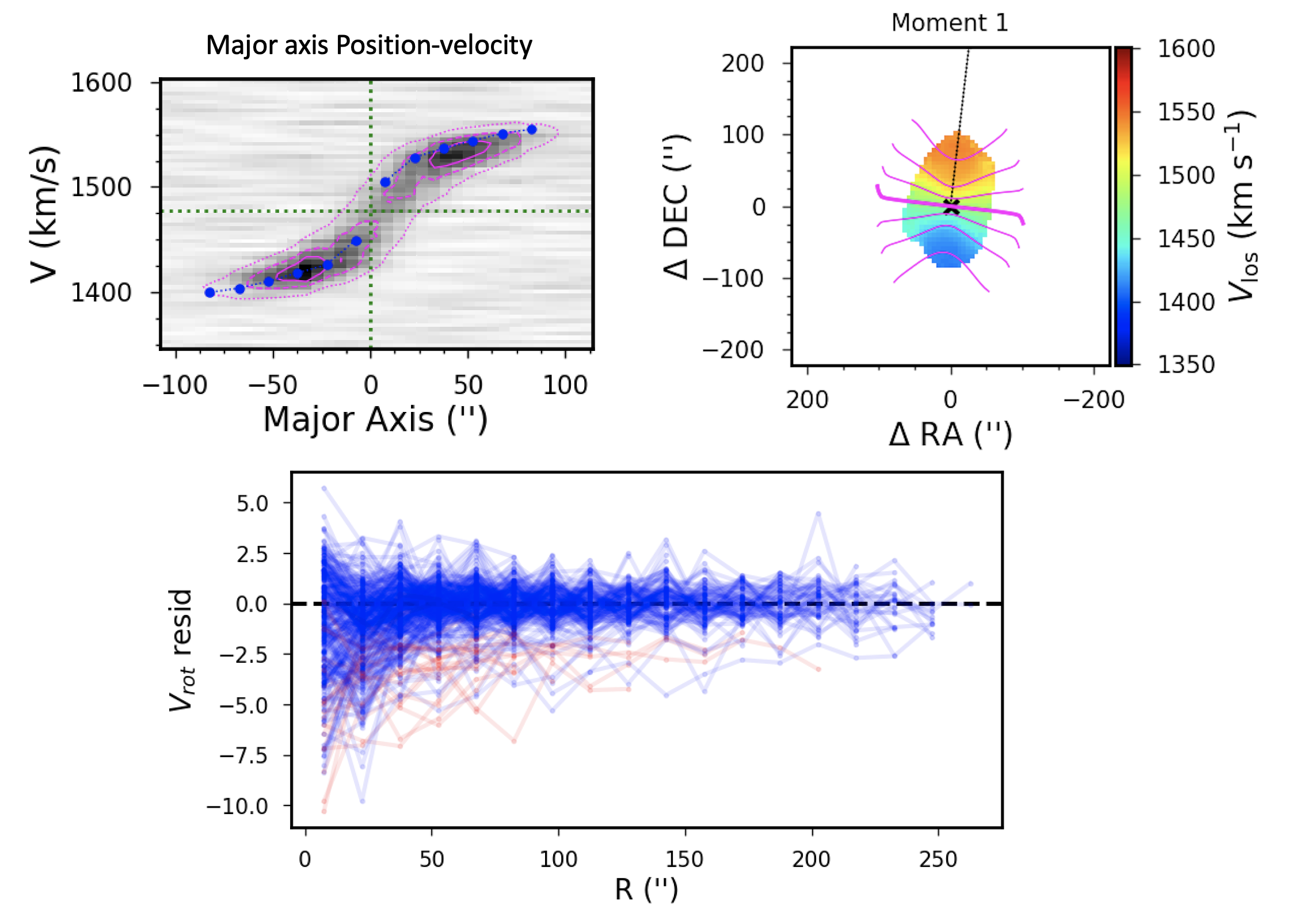
TWG 7 – WALLABY Archive
by Austin Shen and Nathan Deg on behalf of TWG 7
TWG 7 is continuing to work on providing the team and the public the exquisite WALLABY data produced by the rest of the team. Currently, all the source detections for PDR 1 and 2 are available on AusSRC. This includes the ~1300 sources detected in the NGC 5044 team release (TR) 3 (which was released to the team in December 2022).
Additionally, we have developed the framework necessary for incorporating the kinematic models on AusSRC. Now all PDR 1 models as well as models for the NGC 5044 TR 1 and 2 and the NGC 4808 fields are available to the entire team on AusSRC. We plan to add the Vela and NGC 5044 TR 3 models once they are produced.
Work has now begun on storing and sharing the postage stamp sources and kinematic models on AusSRC. Additionally, we have begun consultations with CASDA and CADC about the data engineering required for PDR 2.
Upcoming Meetings
| When | What | Where |
| 2023 February 16 | WALLABY Science Meeting* | Online |
| 2023 February 27-March 3 | Coordinated Surveys of the Southern Sky | ESO Garching, Germany |
| 2023 March 6-10 | Cosmology on Safari | Hluhluwe, South Africa |
| 2023 March 23-24 | 2023 Australian/eROSITA_DE Joint Collaboration Workshop | Online |
| 2023 March 27-31 | PHISCC 2023 – HI surveys in full swing | Cape Town, South Africa |
| 2023 May 1-5 | New Eyes on the Universe: SKA & ngVLA Conference | Vancouver, Canada |
| 2023 May 15-17 | Exploring the Unknown with Radio Surveys | Uluru, Australia |
| 2023 May 30-June 1 | ASTRO 3D Science Meeting | Fremantle, Australia |
| 2023 June/July (TBD) | ASA Annual Scientific Meeting | (TBD) Australia |
| 2023 July 17-21 | New Views on Feedback & the Baryon Cycle in Galaxies | Healesville, Australia |
| 2023 July 31- August 4 | The Evolution of Gas in and around Galaxies | Stanley, USA |
| 2023 August 7-11 | APRIM 2023 | Koriyama, Japan |
| 2023 August 19-26 | URSI GASS 2023 | Sapporo, Japan |
| 2023 TBD | China/Australia ACAMAR Workshop: Gas in Galaxies | TBD |
*The WALLABY Science Meeting occurs on every third Thursday of the month alternating between European and North/South American friendly times. The mode of attendance is online only.
WALLABY Publications
Aug 2022 – Feb 2023:
- Courtois, H. M.; Said, K.; Mould, J.; Jarrett, T. H.; Pomarède, D.; Westmeier, T.; Staveley-Smith, L.; Dupuy, A. et al., 2022, WALLABY Pre-Pilot and Pilot Survey: the Tully Fisher Relation in Eridanus, Hydra, Norma and NGC4636 fields, accepted for publication in the Monthly Notices of the Royal Astronomical Society, doi:10.1093/mnras/stac3246
- Westmeier, T.; Deg, N.; Spekkens, K.; Reynolds, T. N.; Shen, A. X.; Gaudet, S.; Goliath, S. et al., 2022, WALLABY pilot survey: Public release of H I data for almost 600 galaxies from phase 1 of ASKAP pilot observations, Publications of the Astronomical Society of Australia, 39, e058, doi:10.1017/pasa.2022.50
- Deg, N.; Spekkens, K.; Westmeier, T.; Reynolds, T. N.; Venkataraman, P.; Goliath, S.; Shen, A. X.; Halloran, R. et al., 2022, WALLABY Pilot Survey: Public release of HI kinematic models for more than 100 galaxies from phase 1 of ASKAP pilot observations, Publications of the Astronomical Society of Australia, 39, e059, doi:10.1017/pasa.2022.43
- Kim, S.-J.; Oh, S.-H.; Wang, J.; Staveley-Smith, L.; Koribalski, B. S.; Kim, M.; Park, H.-J.; Kim, S. et al., 2022, WALLABY Pilot Survey: H I gas kinematics of galaxy pairs in cluster environment, Monthly Notices of the Royal Astronomical Society, 519, 318, doi:10.1093/mnras/stac3480
